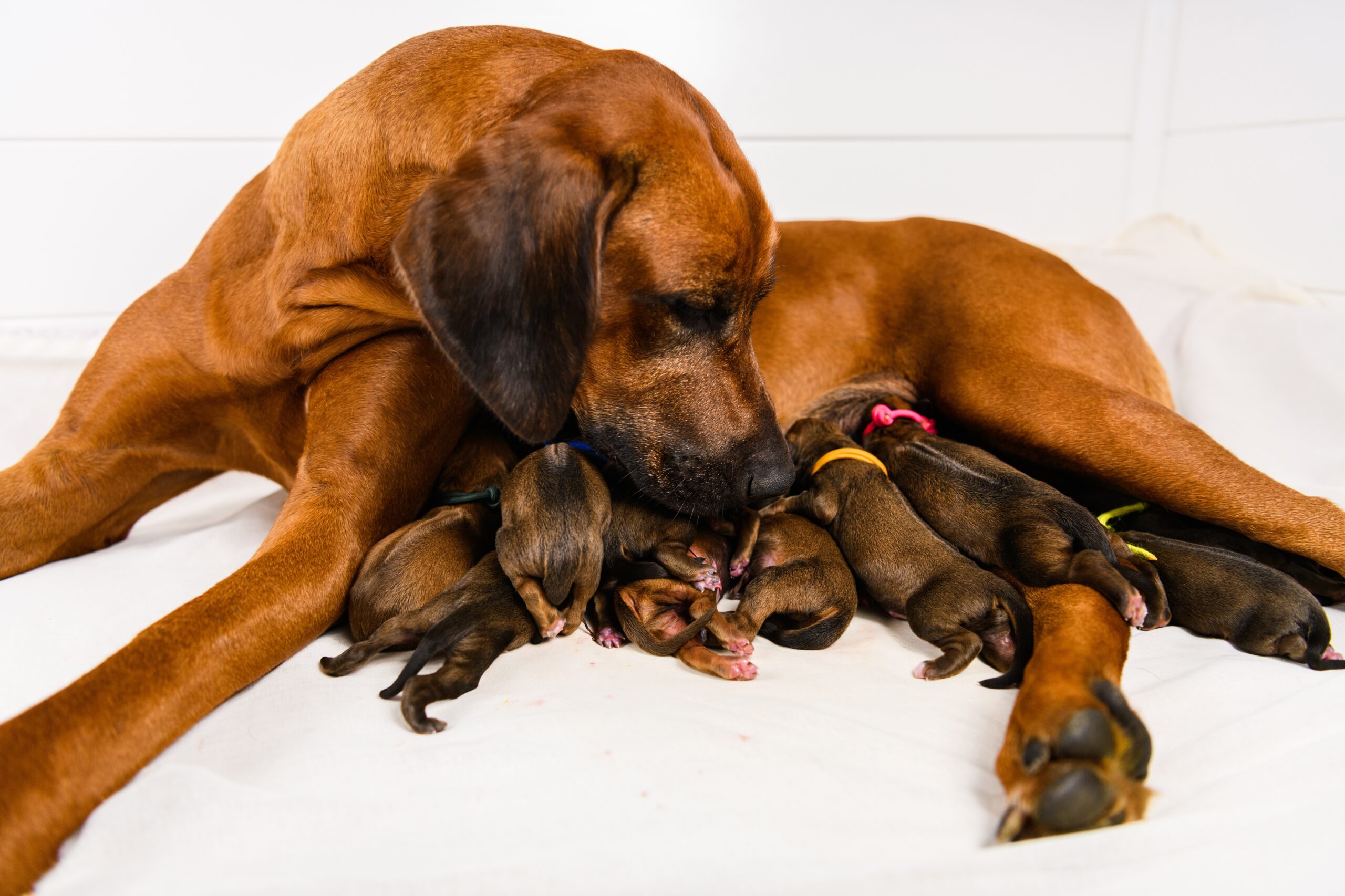
Adventures: Dynamo Dogs
The Dog Journal Adventures: Dynamo Dogs You’re never too old to follow your dreams! Running away with the circus, was mine! In 2005 I was
A pregnant dog should not gain or lose weight in the first five weeks of her pregnancy. Having a scale in the kennel and weighing her once a week is the best way to assure you are providing the proper amount of dog food.
Written By: Marty Greer
During the last three weeks of her pregnancy, she should gain weight – the amount will depend on her breed, structure, and litter size. There is not a hard and fast rule for weight gain. The average dog will have a successful pregnancy if you increase her food intake by 10% a week from week five to delivery. She should typically gain 15 to 25% of her body weight during the last three weeks of the canine pregnancy, more if she s tarted off too thin or has a larger than average litter.
However, the average size Golden Retriever type dog should gain about two pounds per puppy, scaling up or down for different breed sizes. Putting your hands on her at least once a week will allow you to adjust her feeding amounts and type of food to allow for ideal weight gain.
Many female dogs do not eat well around the 3rd to 5th week of pregnancy due to hormonal changes. They then usually eat very well till the last few days before whelping. A day or two before she goes into labor, she again may have a decline in her food intake. This occurs in part because of having less stomach capacity and more stomach acid related to the uterine pressure on her stomach and intestinal tract. Feeding small frequent meals can improve her ability to take in enough calories to allow for optimal fetal growth and development.
Can pregnancy cause a dog not to eat? The answer is yes. For dogs pregnant dogs not eating as well as needed to gain the required weight, you can try these four tips:

Your breeding female should ideally be at a canine body condition score (BCS) of 4, 5 or 6 on a scale of 1 to 9. A score of 3 or lower means she is underweight and won’t be likely to conceive and carry a nice size litter of puppies to term due to inadequate nutrition. A score of 7 to 9, means she is overweight and is more likely to have complications during whelping. Studies show that female dog obesity causes inflammatory changes in her uterus, making it less likely she will exhibit optimal fertility.
To determine the dog body condition score, touch the dog along the rib cage. Short-coated breeds can be evaluated visually. Long coated breeds should have their BCS evaluated by feeling along the ribs and backbone before breeding. The amount and type of dog food should be adjusted several months before breeding.
It is nearly impossible to overfeed a nursing female with a large litter. Of course, if she is looking too round or at weaning, you need to start restricting her daily food intake.
Marty Greer, Doctor of Veterinary Medicine, has 35+ years’ experience in veterinary medicine, with special interests in canine reproduction and pediatrics. She received her Doctor of Veterinary Medicine from Iowa State University in 1981. She’s served as Revival’s Director of Veterinary Services since 2019.

The Dog Journal Adventures: Dynamo Dogs You’re never too old to follow your dreams! Running away with the circus, was mine! In 2005 I was
And, drumroll please, here is the last part of the four part series of the Panel Discussion covering Advertising, Marketing, Branding, Social Media, Website Creation, and more. Hats off to all of the dedicated contributors that have taken the time to put their thoughts on paper.

Local Issues Highlight the Importance of Local Outreach